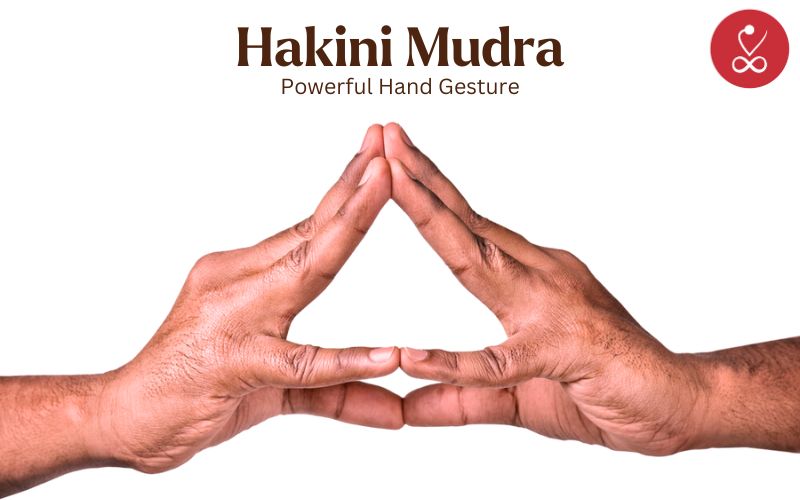Hakini Mudra is a powerful hand gesture used in yoga and meditation to enhance mental clarity, focus, and concentration. It is a simple yet profound technique that anyone can practice to improve their cognitive abilities and inner peace.
Introduction
Hakini Mudra is derived from the Sanskrit word "Hakini," which refers to the goddess of the mind and intellect. This mudra is often associated with the third eye chakra, representing intuition and insight.
Origin and Meaning of Hakini Mudra
The origin of Hakini Mudra can be traced back to ancient yogic traditions, where it was believed to awaken the dormant energy within the mind. The gesture involves joining all fingers of both hands together, forming a pyramid-like shape.
How to Perform Hakini Mudra
To practice Hakini Mudra, sit comfortably in a meditative posture with your spine erect and shoulders relaxed. Close your eyes gently and bring your hands in front of your chest. Join the fingertips of both hands, keeping the palms slightly apart, and form a pyramid shape with your fingers. Maintain this gesture while focusing on your breath and the space between your eyebrows.
Steps to Perform Hakini Mudra
- Sit in a comfortable position with your back straight.
- Bring your hands in front of your chest.
- Join the fingertips of both hands, forming a pyramid with your fingers.
- Close your eyes gently and focus on your breath.
- Hold the mudra for a few minutes while maintaining a relaxed mind.
Benefits of Practicing Hakini Mudra
Mental Benefits
- Enhances concentration and focus
- Improves memory retention
- Calms the mind and reduces stress
Physical Benefits
- Stimulates brain function
- Relieves tension in the head and neck
- Promotes relaxation and mental clarity
Emotional Benefits
- Balances emotions and promotes inner peace
- Increases self-awareness and mindfulness
- Fosters a sense of peace and well-being
Scientific Perspective
Recent studies have explored the scientific basis of mudras like Hakini Mudra. Research suggests that the hand positions in mudras can stimulate specific brain areas, leading to improved cognitive function and emotional regulation.
Yoga and Meditation Practices
Yoga practitioners often incorporate Hakini Mudra into their routines to deepen their meditation experience and enhance their focus during asana practice. This mudra can be combined with breathing techniques to amplify its effects on mental clarity and relaxation.
Common Misconceptions about Hakini Mudra
One common misconception about Hakini Mudra is that it is only for advanced practitioners. In reality, anyone can benefit from practicing this mudra, regardless of their experience level. Another misconception is that mudras are purely symbolic and have no tangible effects, whereas studies and anecdotal evidence suggest otherwise.
Practical Tips for Incorporating Hakini Mudra into Daily Life
To integrate Hakini Mudra into your daily life, you can practice it during moments of stress or when you need to enhance your focus. It can be done discreetly in any setting, making it a convenient tool for managing everyday challenges.
Personal Experiences
Many individuals have shared their experiences of how Hakini Mudra has positively impacted their lives. From students improving their study habits to professionals enhancing their productivity, the benefits of this mudra resonate across various domains.
Conclusion
In conclusion, Hakini Mudra offers a potent means of sharpening the mind, cultivating inner peace, and enhancing overall well-being. By incorporating this simple yet effective practice into your daily routine, you can unlock your mind's hidden potential and experience a deeper connection with yourself.
FAQs
Is Hakini Mudra suitable for beginners?
Yes, Hakini Mudra is suitable for beginners as it is a simple hand gesture that can be easily practiced.
How long should I hold Hakini Mudra?
You can start by holding Hakini Mudra for a few minutes, gradually increasing the duration as you become more comfortable with the practice. Aim for 5-10 minutes initially and adjust based on your comfort level.
Can I practice Hakini Mudra while sitting or standing?
Hakini Mudra can be practiced in both sitting and standing positions. Choose a posture that is comfortable for you and allows you to maintain the mudra without strain.
Are there any contraindications or precautions for Hakini Mudra?
Hakini Mudra is generally safe for most people. However, if you have any hand or wrist injuries, it's advisable to practice with caution or seek guidance from a qualified instructor.
Can Hakini Mudra help with insomnia?
While Hakini Mudra is primarily known for its benefits in enhancing focus and mental clarity, some practitioners find that it contributes to overall relaxation, which may indirectly support better sleep. However, it's recommended to consult a healthcare professional for personalized advice on specific sleep issues.





Comments